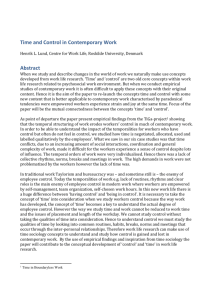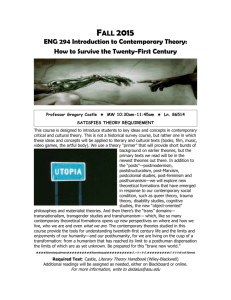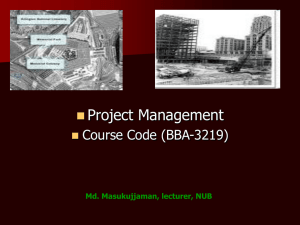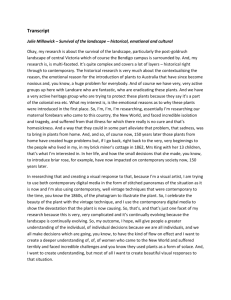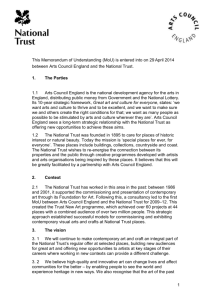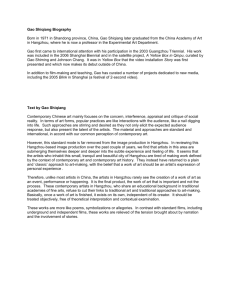Collections, Obsessions, and the Display of the Other with Mary Ting
advertisement
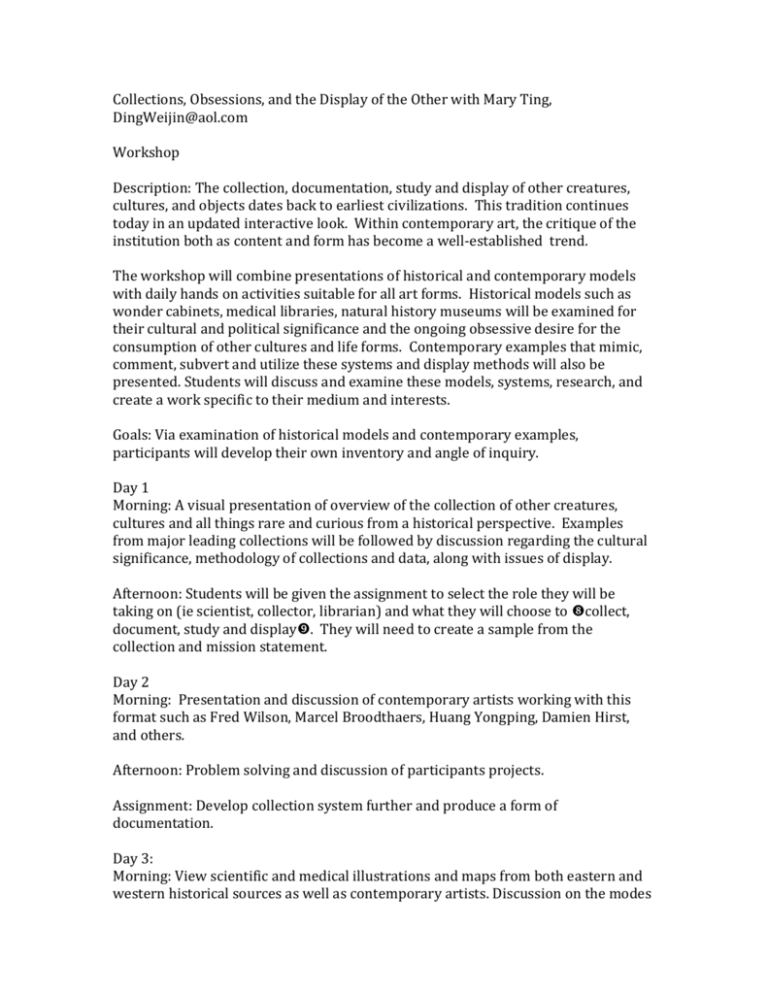
Collections, Obsessions, and the Display of the Other with Mary Ting, DingWeijin@aol.com Workshop Description: The collection, documentation, study and display of other creatures, cultures, and objects dates back to earliest civilizations. This tradition continues today in an updated interactive look. Within contemporary art, the critique of the institution both as content and form has become a well-established trend. The workshop will combine presentations of historical and contemporary models with daily hands on activities suitable for all art forms. Historical models such as wonder cabinets, medical libraries, natural history museums will be examined for their cultural and political significance and the ongoing obsessive desire for the consumption of other cultures and life forms. Contemporary examples that mimic, comment, subvert and utilize these systems and display methods will also be presented. Students will discuss and examine these models, systems, research, and create a work specific to their medium and interests. Goals: Via examination of historical models and contemporary examples, participants will develop their own inventory and angle of inquiry. Day 1 Morning: A visual presentation of overview of the collection of other creatures, cultures and all things rare and curious from a historical perspective. Examples from major leading collections will be followed by discussion regarding the cultural significance, methodology of collections and data, along with issues of display. Afternoon: Students will be given the assignment to select the role they will be taking on (ie scientist, collector, librarian) and what they will choose to collect, document, study and display. They will need to create a sample from the collection and mission statement. Day 2 Morning: Presentation and discussion of contemporary artists working with this format such as Fred Wilson, Marcel Broodthaers, Huang Yongping, Damien Hirst, and others. Afternoon: Problem solving and discussion of participants projects. Assignment: Develop collection system further and produce a form of documentation. Day 3: Morning: View scientific and medical illustrations and maps from both eastern and western historical sources as well as contemporary artists. Discussion on the modes of image making, systems and its application to contemporary works. Afternoon: Student presentation of documentation that supports their collection. Day 4: Morning:Viewing and discussion of related time based contemporary works such as Nicolas Dumit Estevez, Tseching Hsieh, Quay Brothers, and others). Afternoon: Continue to further develop the collection with time based work and manners of display. Day 5 Morning: Continue working on collection project. Afternoon: Individual presentations of the respective collections and the institutions long-term goals. Preparation for evening presentation. Suggested Reading: Asma, Stephen T., Stuffed Animals and Pickled Heads: The Culture and Evolution of Natural History Museums. New York: Oxford University Press, 2001. Berger, Maurice, Fred Wilson, Objects and Installations 1979-2000. Center for Art and Visual Culture: Baltimore, 2001. Foster, Hal, The Return of the Real, chapter 6 The Artist as Ethnographer, pg. 171203. Cambridge, Mass: MIT Press, 1996. Haraway, Donna, The Haraway Reader, chapter 5, Teddy Bear Patriarchy: Taxidermy in the Garden of Eden, pg. 151-198. New York: Routledge, 2004. Krauss, Rosalind, A Voyage on the North Sea: Art in the Age of the Post-Medium Condition, NY: Thames and Hudson, 1999. McHine, Kynaston, The Museum as Muse: Artists Reflect, New York: The Museum of Modern Art, 2002. Stewart, Susan, On Longing: Narratives of the Miniature, the Gigantic, the Souvenir, the Collection, Durham and London: Duke University Press, 1993. bibliodyssey.blogspot.com Materials: ideas


